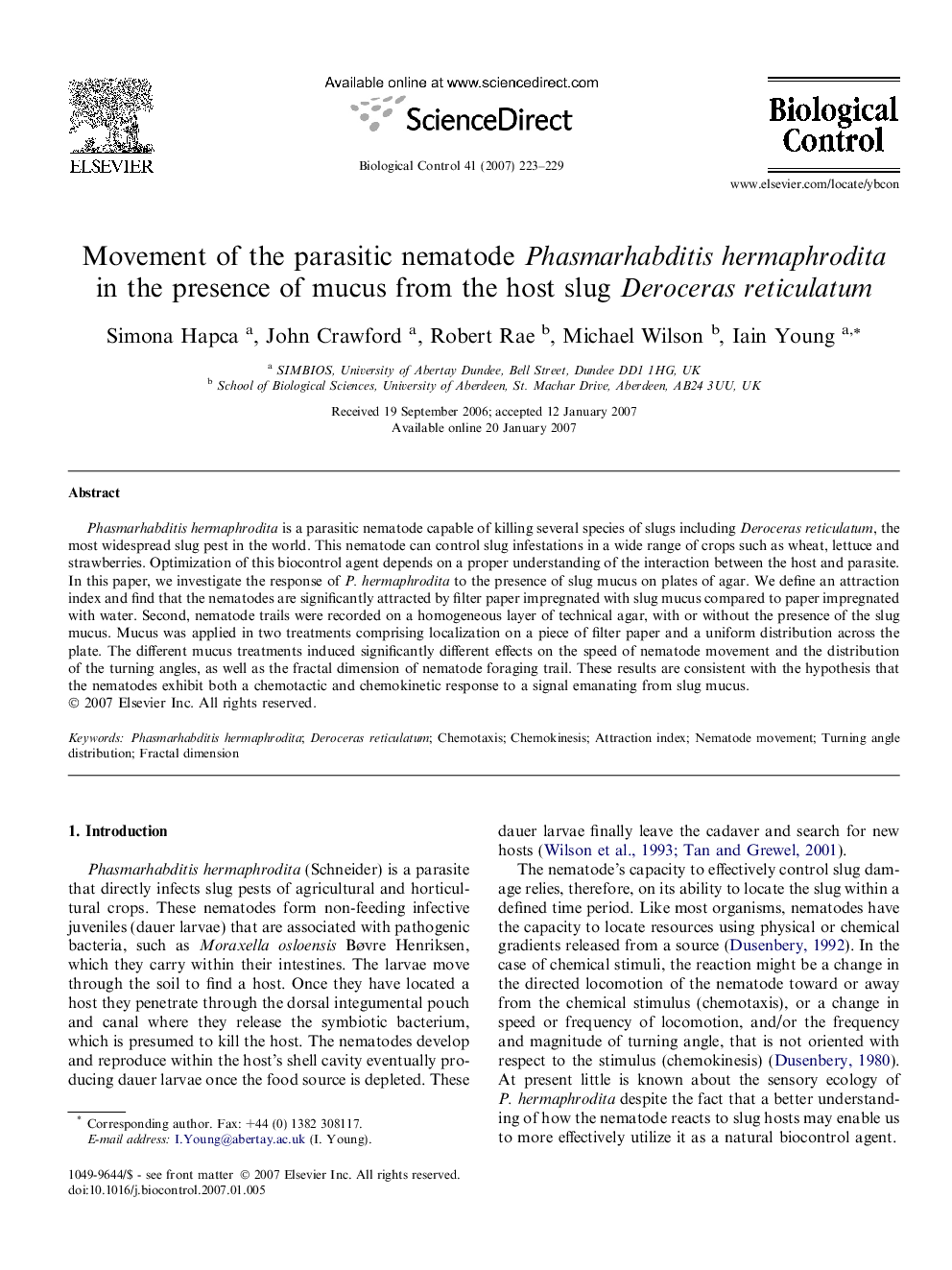| Article ID | Journal | Published Year | Pages | File Type |
|---|---|---|---|---|
| 4505086 | Biological Control | 2007 | 7 Pages |
Phasmarhabditis hermaphrodita is a parasitic nematode capable of killing several species of slugs including Deroceras reticulatum, the most widespread slug pest in the world. This nematode can control slug infestations in a wide range of crops such as wheat, lettuce and strawberries. Optimization of this biocontrol agent depends on a proper understanding of the interaction between the host and parasite. In this paper, we investigate the response of P. hermaphrodita to the presence of slug mucus on plates of agar. We define an attraction index and find that the nematodes are significantly attracted by filter paper impregnated with slug mucus compared to paper impregnated with water. Second, nematode trails were recorded on a homogeneous layer of technical agar, with or without the presence of the slug mucus. Mucus was applied in two treatments comprising localization on a piece of filter paper and a uniform distribution across the plate. The different mucus treatments induced significantly different effects on the speed of nematode movement and the distribution of the turning angles, as well as the fractal dimension of nematode foraging trail. These results are consistent with the hypothesis that the nematodes exhibit both a chemotactic and chemokinetic response to a signal emanating from slug mucus.
